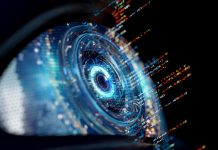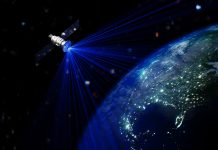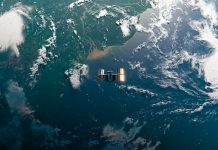When it comes to physics, the US National Science Foundation (NSF) are prolific in a range of projects – but do their discoveries shape collaborative scientific capacity?
According to the Division of Physics (PHY) at the NSF, the processes and core understandings in physics “shape and control the everyday world of chemistry and biological systems”. [1]
How does physics relate to other disciplines?
While scientific output from astronomers may seem to be distant to the workings of Earth, situations in which the functioning of gravity and mass is truly understood can shape an experiment in a different discipline. For instance, think of a doctor that is treating a patient with a broken foot. There is a level of physics existing in the spaces between gravitational forces, mass and decision-making that lead to a treatment decision.
Denise Caldwell, Director, Division of Physics at the U.S. National Science Foundation (NSF), said: “The study of physics as an intellectual pursuit underpins all the other physical sciences and increasingly, the life sciences as well, as physicists and biologists increasingly cooperate to address problems covering a range of scales, from molecule to organism.” [2]
In a less abstract way, physics looks at the structure of matter, the structure of atomic and molecular systems themselves. To do that, the NSF need to sometimes innovate new tools that can measure with extreme precision.
The triumph of LIGO as an example of collaboration
For example, the Laser Interferometer Gravitational-wave Observatory (LIGO). In 2017, the Nobel Prize in Physics was awarded to Rainer Weiss, Kip Thorne and Barry C Barish for LIGO – which observed gravitational waves as predicted by Albert Einstein, 100 years ago. LIGO is two widely separated laser interferometers located within the U.S., one in Hanford, Washington, and the other in Livingston, Louisiana. [3] The twin detectors operate together to detect gravitational waves. LIGO, one of the most precise instruments created, was able to detect gravitational waves from 1.3 billion years ago.
But aside from the profound realisation of a key tenet of physics, LIGO also paves the way for the use of femtosecond lasers in other disciplines. The precision of the instruments means that similar technology could be applied in laser surgeries, significantly decreasing chances of a failed surgery.
Economically and technically, LIGO was a triumph for researchers in PHYS – but it also represents huge potential for scientific collaboration that leads to a unified elevation in application.
Does physics have to be completely applicable to be valuable?
While it is undeniable that the intellectual foundations of physics shape other material sciences, there is a more philosophical question that underlies the implication. Projects like LIGO have broken through into pop-culture and mainstream awareness, moving a whole population by the premise of a completed prophecy – the careful calculations of Einstein, translating across a hundred years to the precision and engineering of LIGO. Maybe the popularity of LIGO will even inspire young people to pick a career in PHYS, or to turn their hand to science as a whole.
But does a physics project need to be widely applicable to be valuable? If establishing the basis of how the smallest things in the universe work results in knowledge that can’t be translated, does that cancel out the discovery?
Maybe when humanity gains new scientific knowledge about the world we occupy and how we came to exist, this much is a revelatory gift.
But ideas usually fuel more ideas, which can then create new projects.
Director Caldwell further commented: “As such science progresses – whether it be neutrinos, cold atoms, Bose-Einstein Condensates, astrophysical plasmas, or the origin of the elements in the universe – the Physics Division has had and continues to have, a major role to play in driving scientific knowledge.” [4]
[1] https://www.nsf.gov/mps/phy/about.jsp
[2] https://www.openaccessgovernment.org/pursuing-physics-at-the-forefront-of-knowledge/44436/
[3] https://www.nsf.gov/news/special_reports/ligoevent/pdfs/LIGO_factsheet_2017_v01.pdf
[4] https://www.openaccessgovernment.org/pursuing-physics-at-the-forefront-of-knowledge/44436/











